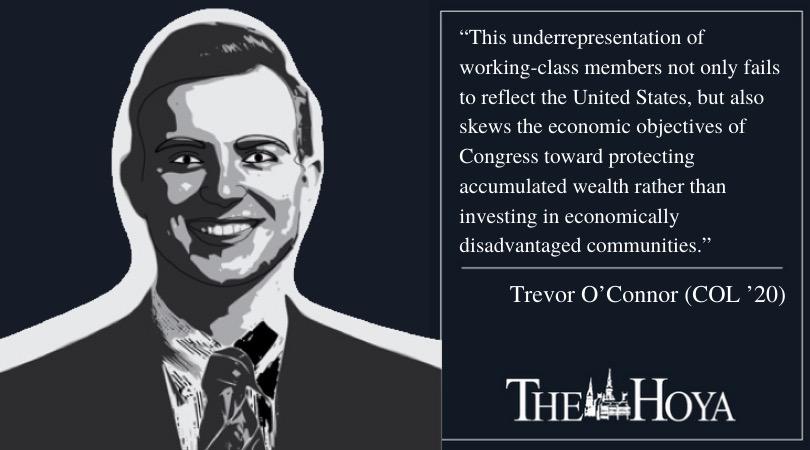Despite living in the richest country on earth, almost half of Americans lack the cash on hand to afford a $400 emergency. Wall Street celebrates as the stock market skyrockets to ever-higher levels, yet almost a quarter of U.S. residents lack retirement savings and almost 4 in 5 U.S. workers live paycheck to paycheck. While official unemployment dips to record lows, over 1.7 million workers rely on a $7.25 minimum wage to make ends meet. Stock indexes often fail to reflect the pocketbooks of working-class Americans. Yet the members of our legislature rarely come from the most economically disadvantaged communities. To fight for structural change, we must elect more working-class people.
Money is power, and the U.S. Congress serves as the prime example of this principle. The median net worth of members of Congress stands at over half a million dollars, with over 40% of members classified as millionaires. Yet less than 3% of American households have a net worth of over $1 million. If the United States reflected Congress, over 130 million people would be millionaires — almost half of the U.S. population. Over a dozen Congress members sit on a net worth of over $20 million, with Rep. Greg Gianforte (R-Mont.) boasting a net worth of over $135 million. Meanwhile, the median net worth of the American household is $97,000 and almost 40 million Americans live in poverty.
The wealth gap between legislators and the public matters. If the financial composition of Congress proportionally reflected the United States, each Congress would pass one to three more major progressive economic policies, according to a 2012 study in Legislative Studies Quarterly. These progressive policies include bills that strengthen unions, raise the minimum wage and deliver more resources into poorer communities. According to the study, members from working-class backgrounds were more likely to support pro-union legislation, regardless of party.
This underrepresentation of working-class members not only fails to reflect the United States, but also skews the economic objectives of Congress toward protecting accumulated wealth rather than investing in economically disadvantaged communities. Simply put, if you’ve lived the experience, understood the struggle and identified with the average American rather than the wealthy elite, you’re more likely to champion policies that benefit at the bottom. Members’ backgrounds inform their current policy goals.
Institutional barriers, however, prevent many working-class people from gaining higher offices. Those who are working-class are often denied the time, resources, and energy to invest in a campaign which consumes one’s waking hours and evaporates their emotional and financial reserves. For those balancing two to three jobs on top of child-rearing, such a task is nearly impossible. Campaigning may aid the movement to reduce economic inequality, but it doesn’t pay the bills.
Not only do working-class people lack the capital to self-finance campaigns, but also many struggle to gain funding from those who can. The average Senate victory now costs over $10 million. It’s nearly impossible for those without extensive donor networks to run a viable campaign. Due to the class segregation of our society, those who are poor are less likely to have connections with those who are upper class, meaning less access to large donors. While a grassroots method can be effective, it’s also difficult to go against the funding powerhouses and war chests of incumbents who can accumulate millions of dollars before a competitor is even announced. Without organized money, campaigns need organized people. However, organizing people requires time and other resources that come easier to the economically privileged.
Yet change is happening: The 2018 midterms brought in new members and smaller pocketbooks. Rep. Sharice Davids (D-Kan.) withdrew savings from her 401(k) and moved in with her mother to run for Kansas’ 3rd Congressional District. On the campaign trail, she told stories of failing to afford $600 insurance premiums. Similarly, Rep. Jared Golden (D-Maine) and his wife lived on a combined $17,000 in 2018. Such backgrounds allow legislators to not only understand the majority of Americans’ economic conditions, but to also champion structural economic change once in office.
If we want a Congress that reflects the U.S. socioeconomic landscape, we must elect more working-class people to Congress to represent working-class Americans. Collectively, we must rid ourselves of the idea that those who are wealthy and well connected are the ones who best fit the role of an elected official. Indeed, true representation looks more like your street than any hall of power.
Trevor O’Connor is a senior in the College. Representation Gaps appears online every other Tuesday.














